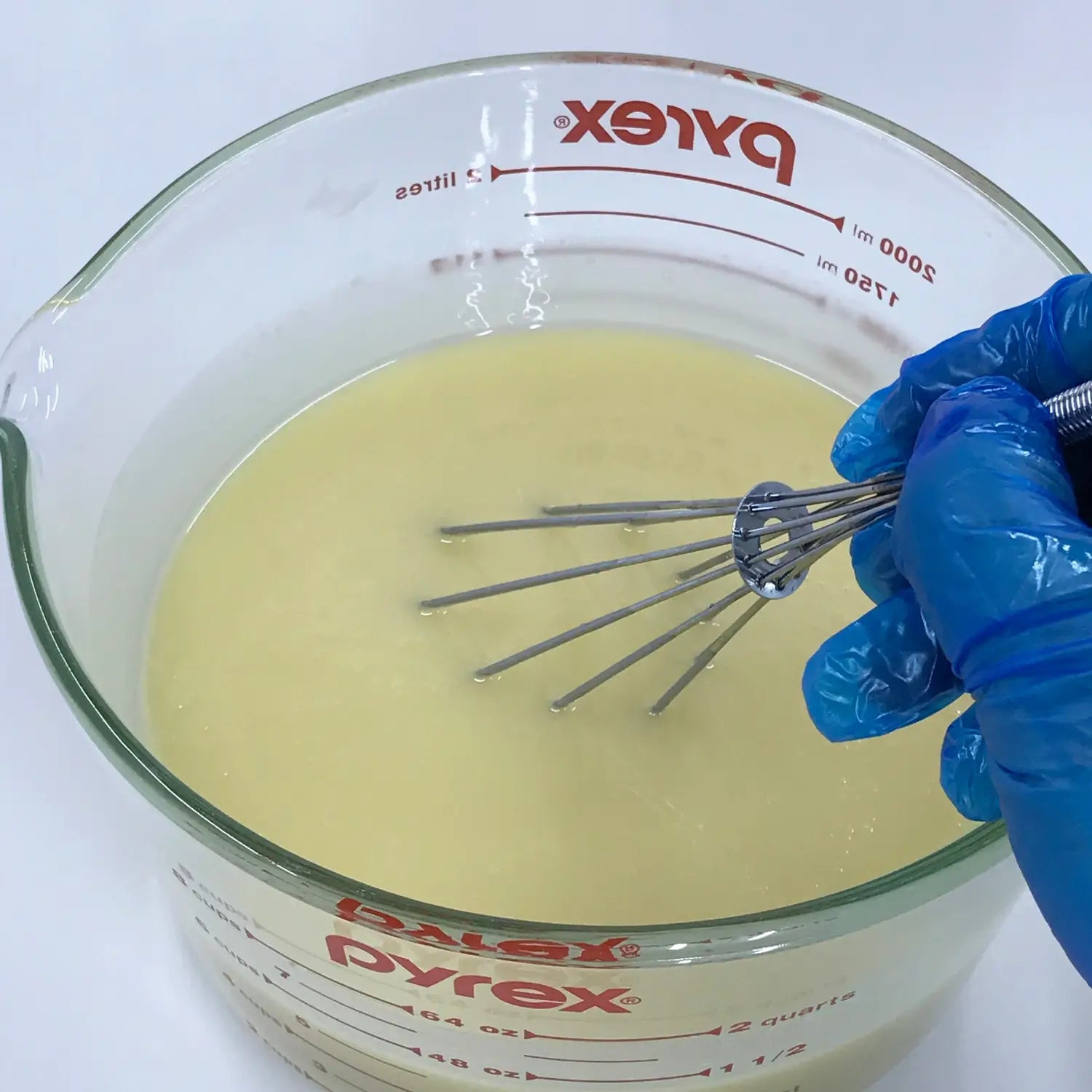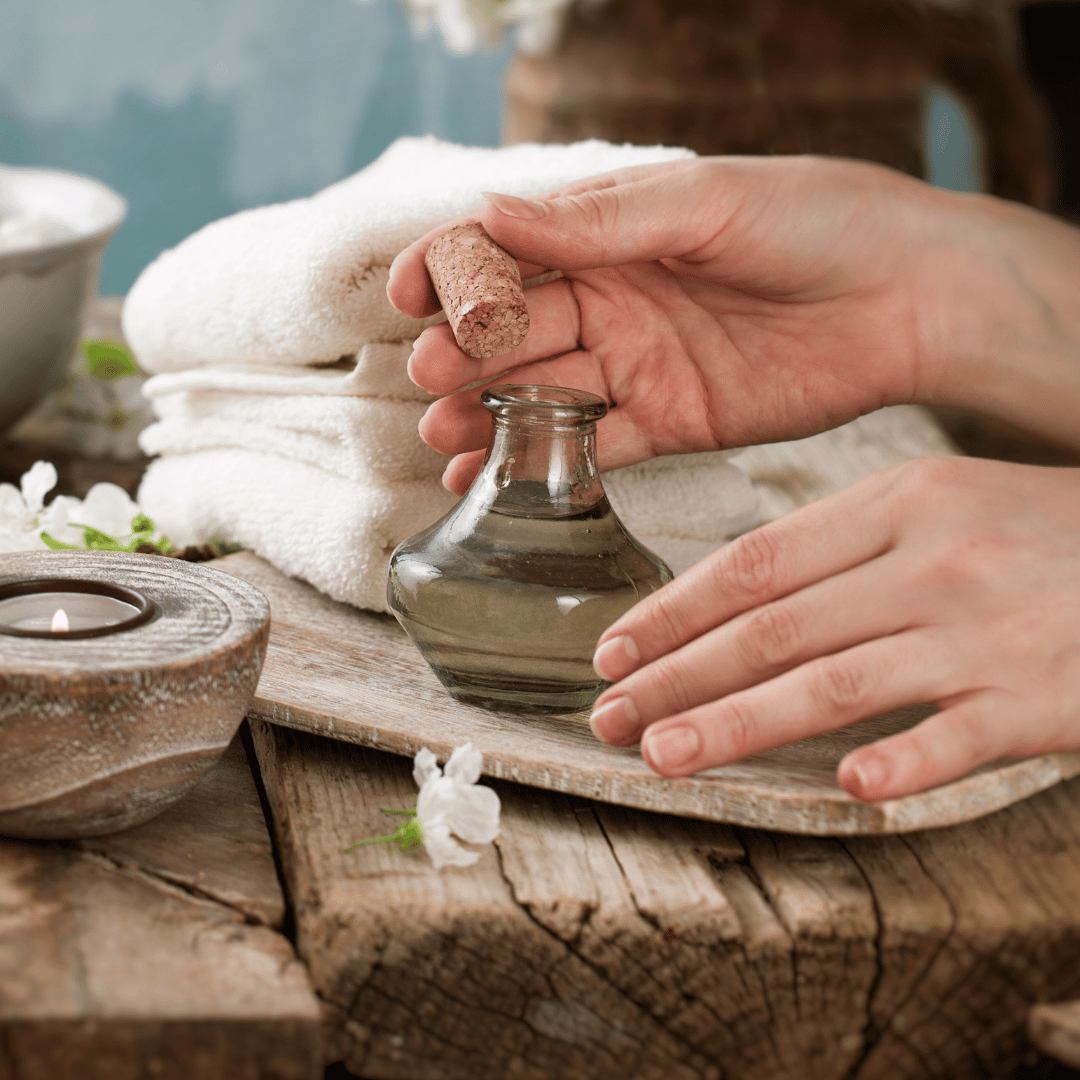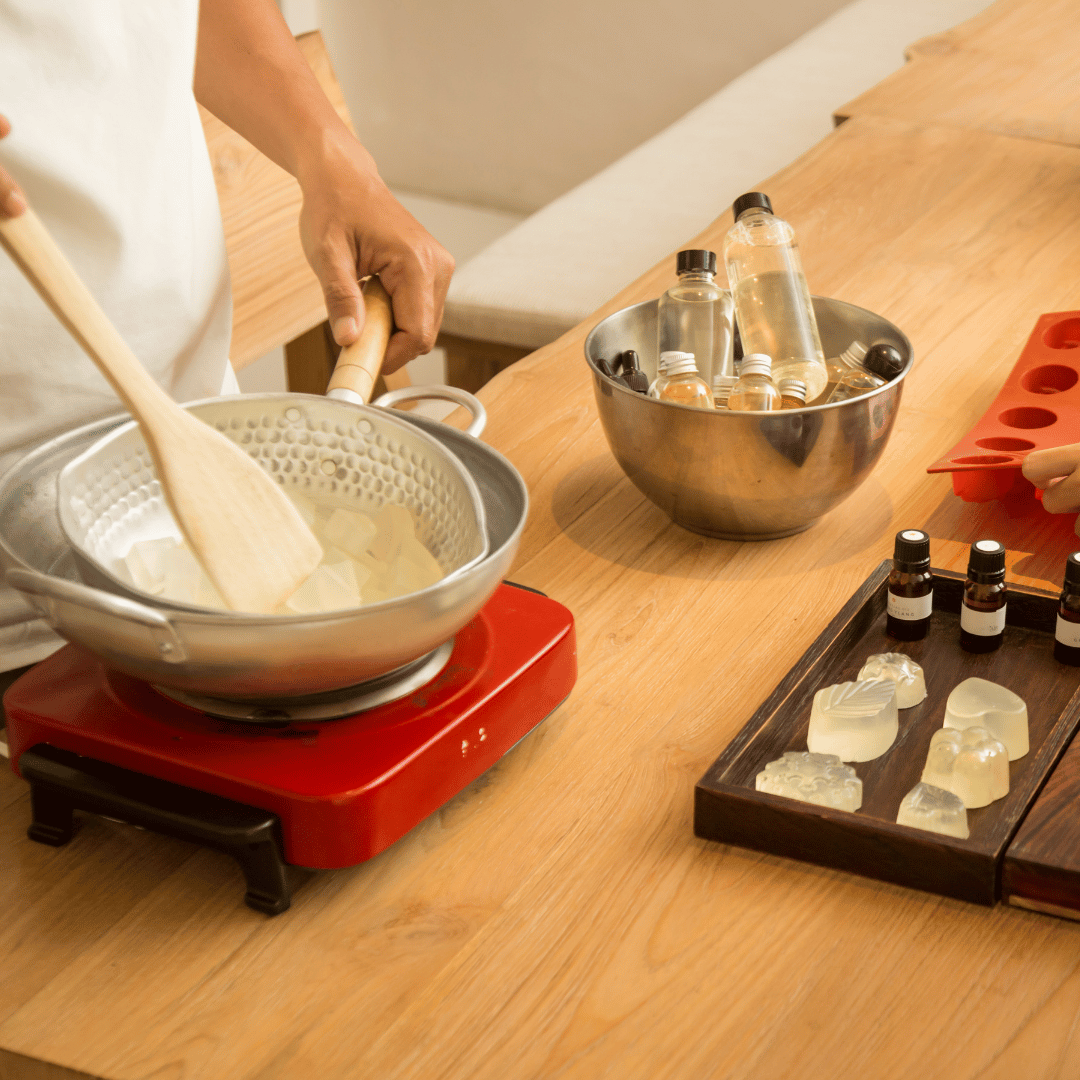There are a lot of terms thrown around when you’re learning how to make soap. The most tricky of them for a newbie to learn and recognize is ‘trace.’ All the books, blogs and videos say to stop stick blending when you’ve hit ‘trace’ and then, more confusingly, it may have been referred to as thin, medium or thick trace. What is trace? Simply put, trace is a point in the soap making process when oils and lye water have emulsified. Once the soap has reached thin trace, it will continue to thicken over time.

What is trace, anyways?
Mixing lye water and oils together starts the saponification process. Saponification occurs once the oil and lye molecules create new soap molecules.
This mysterious term pops up in every single soap recipe but leaves many soap makers puzzled, even the most advanced ones. Yet, it’s absolutely crucial in cold process soapmaking—at least, if you want your soaps to turn out! Trace is the exact moment when the saponification reaction begins.
So how do you recognize trace?
Immediately upon pouring lye water into oils, the mixture will begin to turn slightly cloudy and milky. With a few pulses and stirs of the stick blender, the entire mixture will turn a creamy consistency.
It all has to do with the texture of the soap batter. At trace, the batter is thick enough that gently pulling the wand out of the immersion blender leaves a raised mark on the batter. That’s when you can add your scents, superfatting oil, and exfoliants before pouring your soap into the mould.
It’s crucial for your soap to reach trace, and for saponification to have started, before you pour it. Otherwise, the oils and sodium hydroxide solution may separate, leaving pockets of oil and sodium hydroxide. Reaching trace is especially important as unreacted sodium hydroxide is very corrosive and may irritate or even burn your skin.

The longer you mix the soap batter, the thicker and more visible the trace. You’ll want to play with trace a bit depending on what pattern you want.
Light trace refers to soap batter with no oil streaks, and has the consistency of thin cake batter. For making swirled soaps, you generally want to work with a light trace. The batter will be easy to pour, as shown below. Thin trace is an ideal time to add colorants and fragrances because the thin texture is easy to stir and blend.
Medium trace can be recognized by a a thick cake batter or thin pudding consistency. Trailings of soap stay on the surface of your soap mixture when lightly drizzled from a few inches overhead. Medium trace is a great time to incorporate additives that need to suspend within the soap such as poppy seeds etc.
In order to reach thick trace, excessive stick blending is usually required. Thick trace is the consistency of thick pudding and holds its shaped when poured. Thick trace is perfect for bottom layers, as it is able to support lighter soap on top. On the other hand, for embeds or layers, you generally want to work with a thick trace.
Speeding up or slowing down trace
Now that you know what trace is, it’s time to learn how to control it! You may have already noticed that for some recipes, you’ll have to mix the batter for more than 10 minutes before you reach a light trace, while for others, it will take just a few moments. A lot of factors can affect the speed of trace. Here’s a list of them.
Factors that can affect trace:
- Stick blenders bring soap to trace more quickly than stirring by hand. When mixing your water and oils, alternate between stirring and pulsing the stick blender in short bursts. Once the soap has reached a thin trace, do not continue stick blending unless you’d like to reach a medium or thick trace.
- Some fragrance oils can accelerate the soap batter, causing it to reach a thick trace more quickly. To avoid this, use a whisk to blend in fragrance oils rather than a stick blender. Mixing in a fragrance oil with a stick blender can cause even the most well behaved fragrance oil to accelerate trace.
- Adding fragrances after colorants and other additives gives you more time to work with the soap before a medium or thick trace is reached.
- Some additives, such as clay, affect trace. This is why pre-mixing with water helps to slow water absorption when using clays. The water and oil absorbing properties of the clay can speed trace.
- The oils and butters used will affect how quickly the soap will reach trace, and how quickly it will turn into medium or thick trace. Soap made with a high percentage of hard oils and butters will reach trace more quickly than soap made with mostly liquid oils. (With no hard oils or butters, this soap could be stick blended for a long time before reaching medium trace!)
- Temperature also plays a part in trace. When soaping at higher temperatures, medium and thick trace will be reached more quickly than when soaping with cooler temperatures. If your design requires a lot of swirls, soaping at room temperature is common.
- Water discounting results in faster trace. A water discount is the process of decreasing the amount of recommended water in a recipe. Water discounting results in a harder bar of soap, with a shorter cure time. But, when water is discounted the recipe will reach medium and thick trace faster. Because of this, water discounting is recommended for more advanced soapers.
- Adding cold additives, such as cold milk or cream, at the end of your soap making process can dramatically speed trace.


